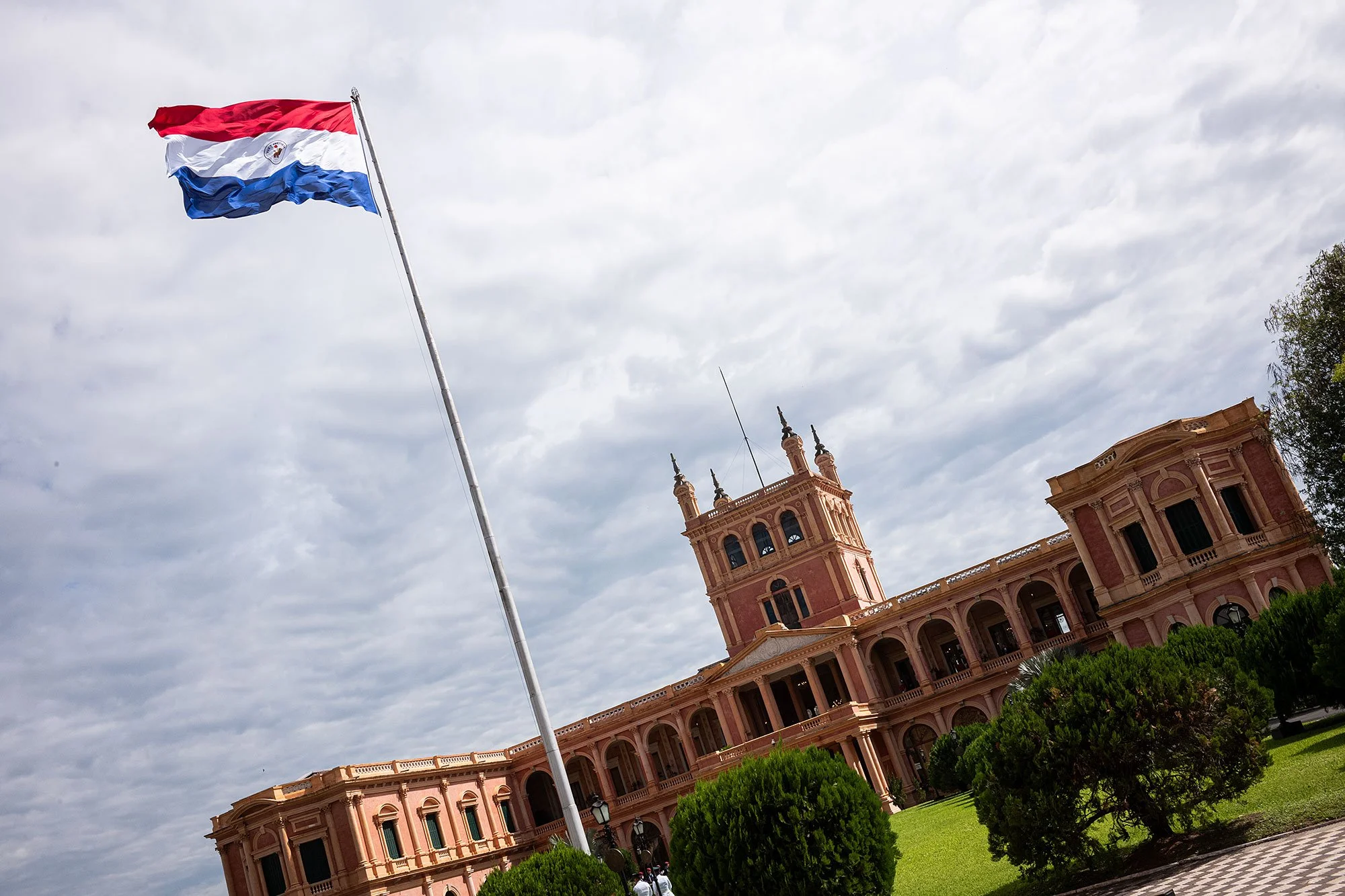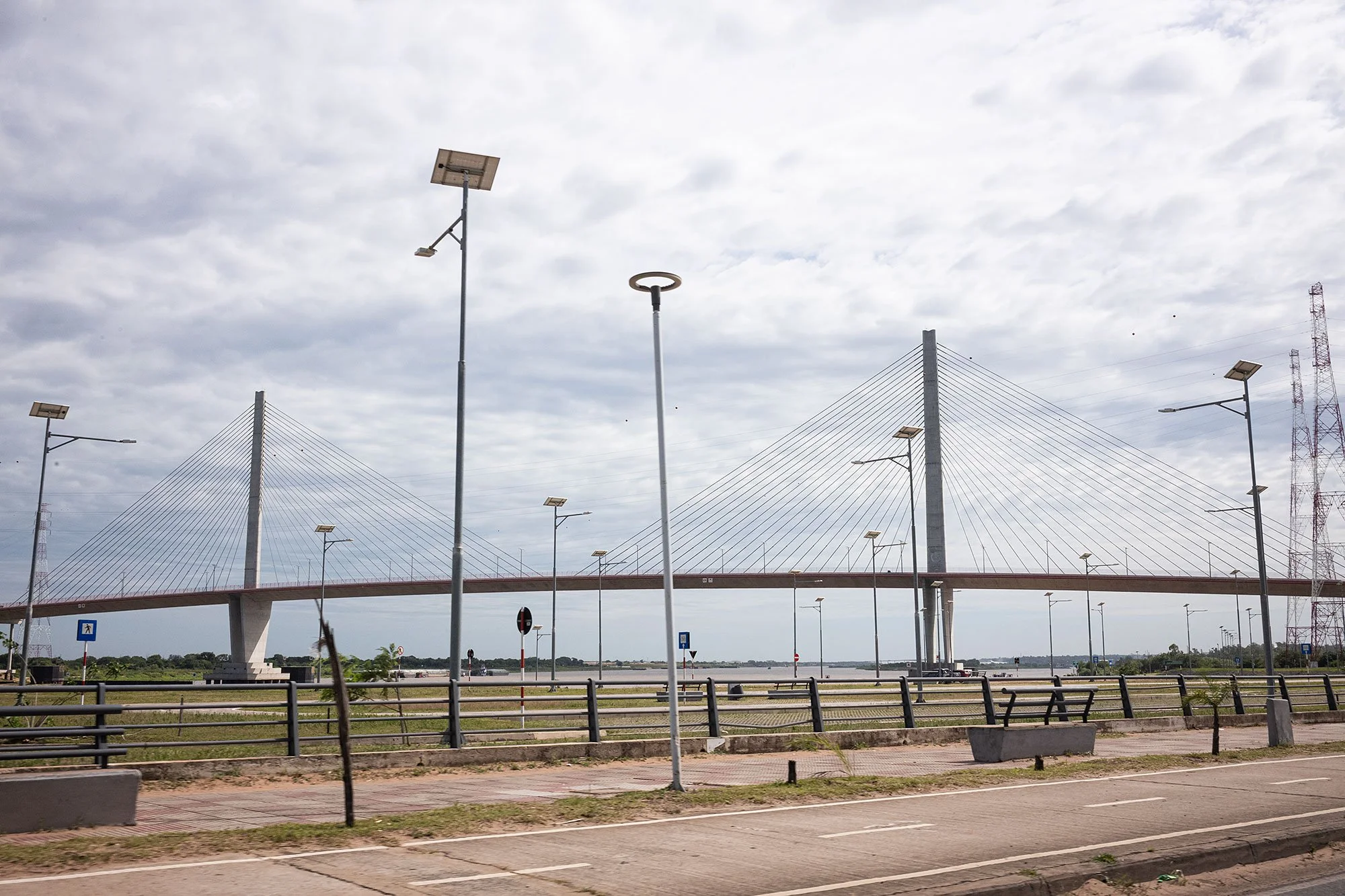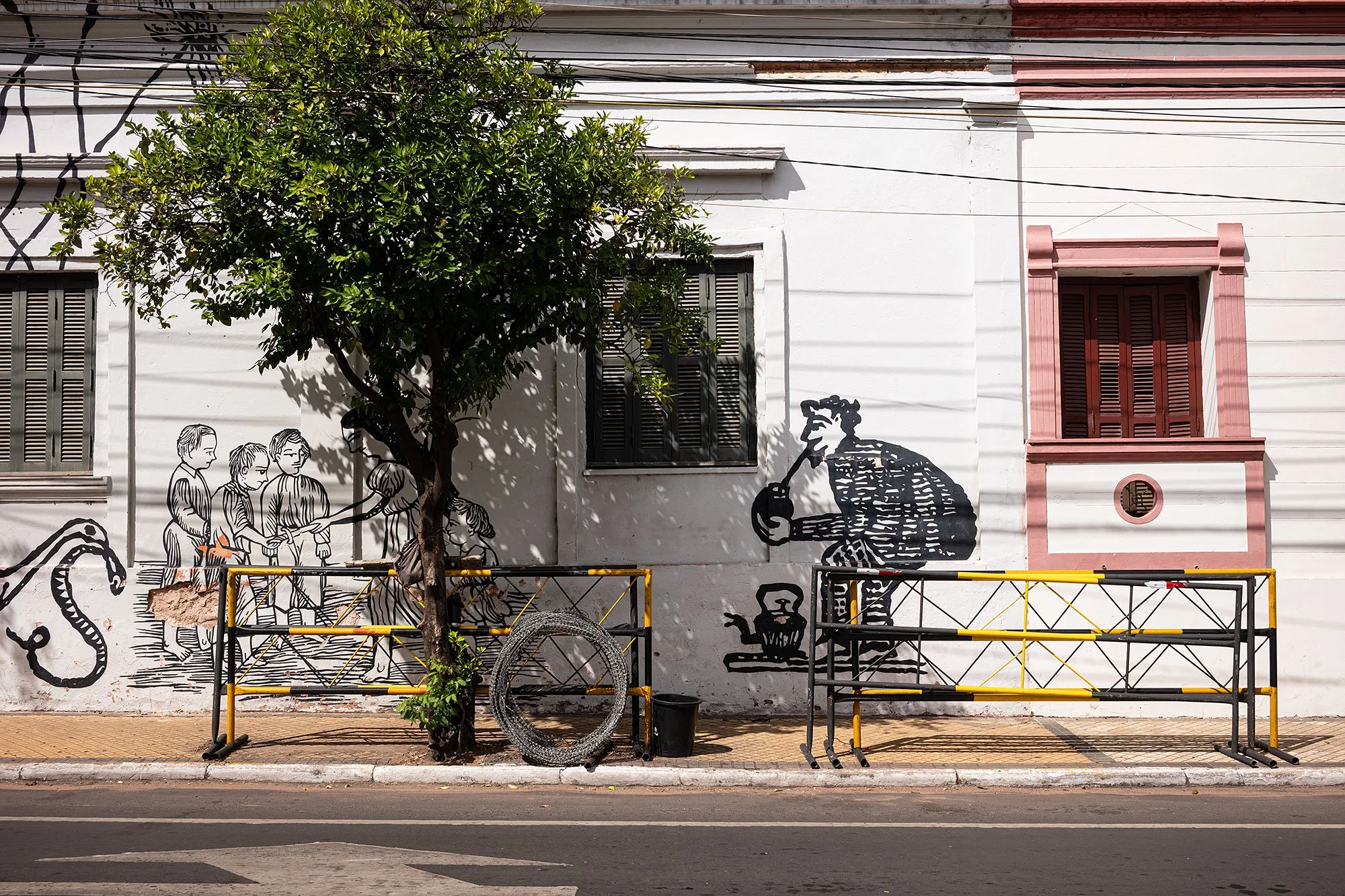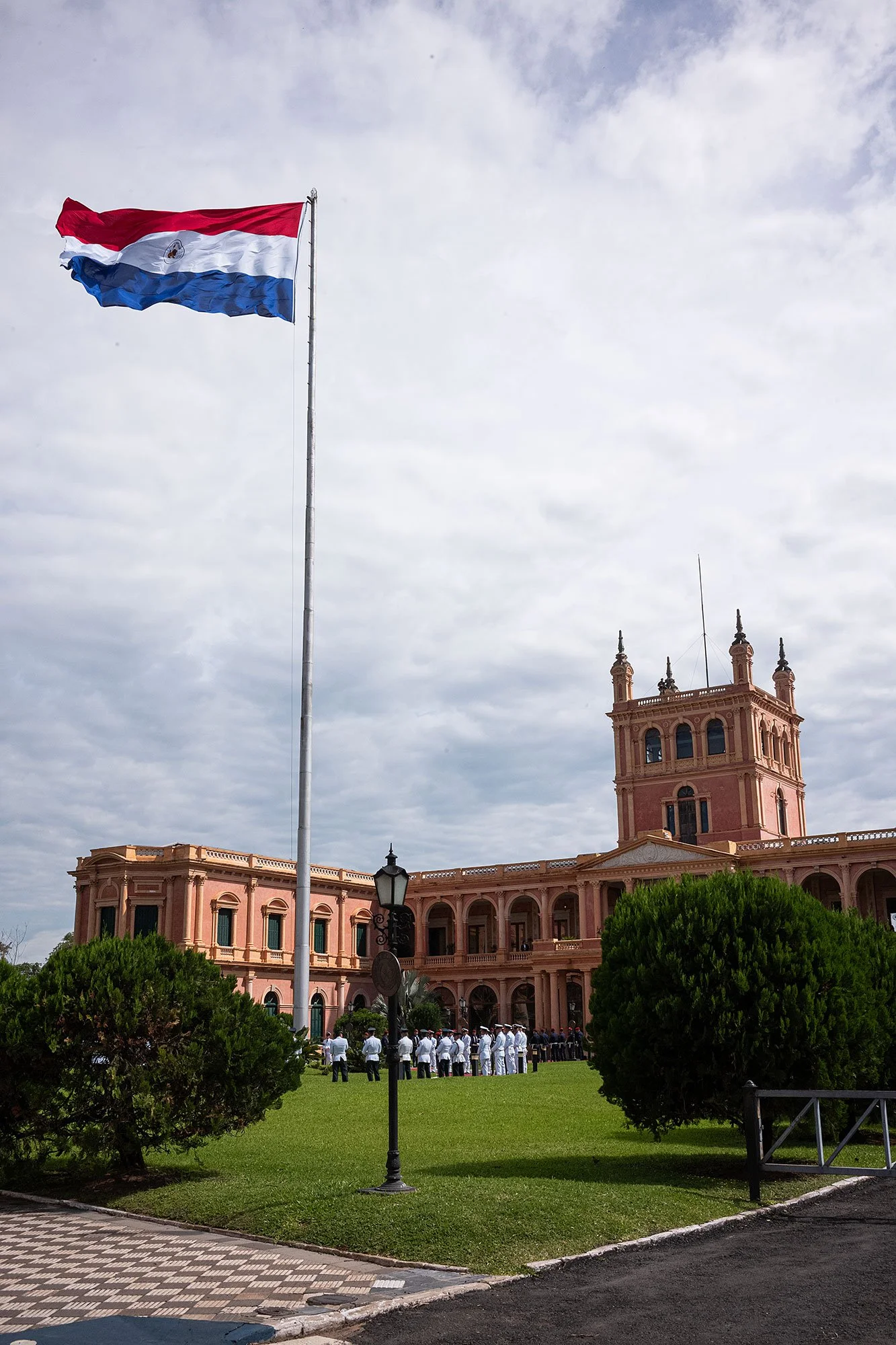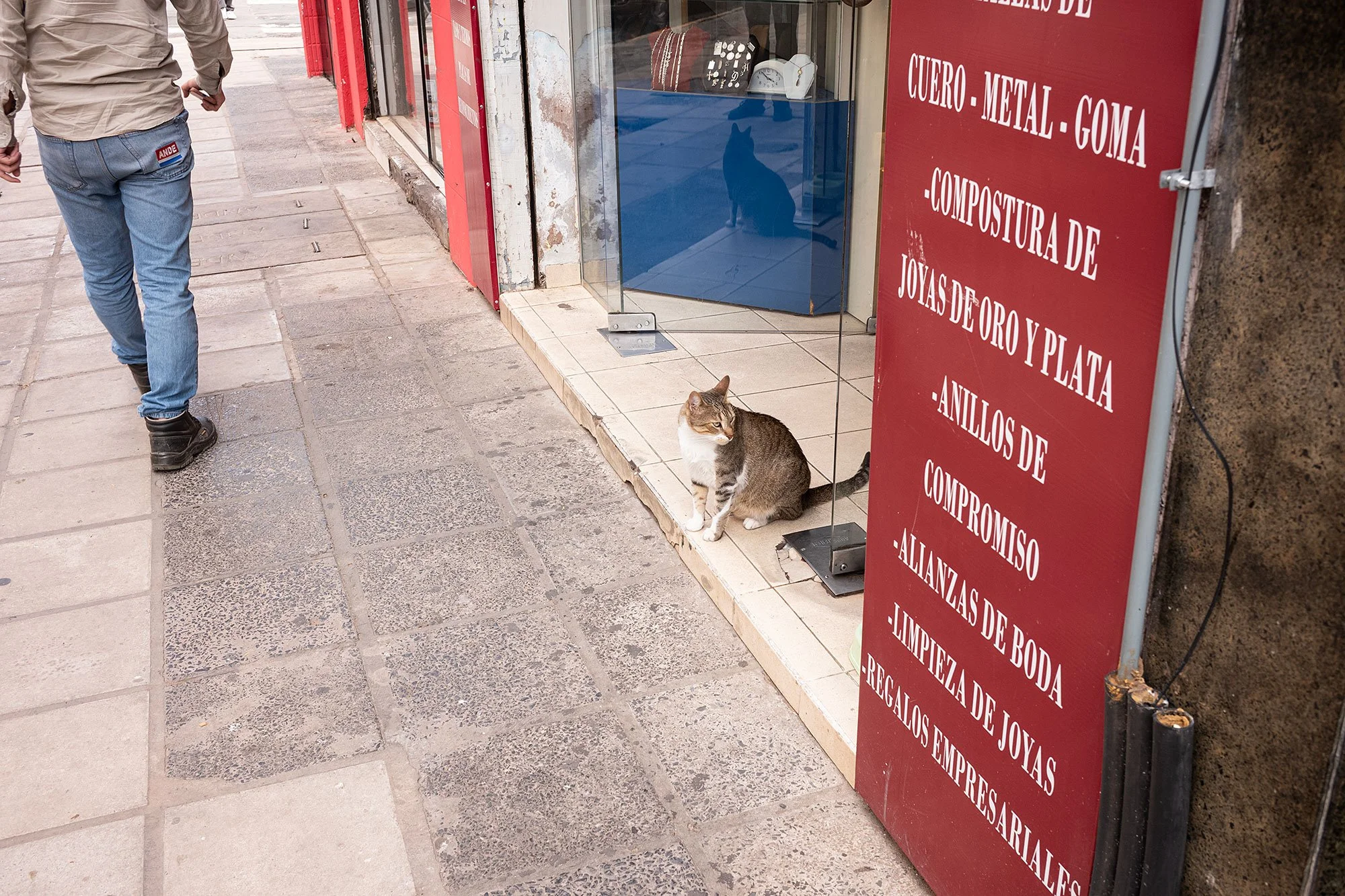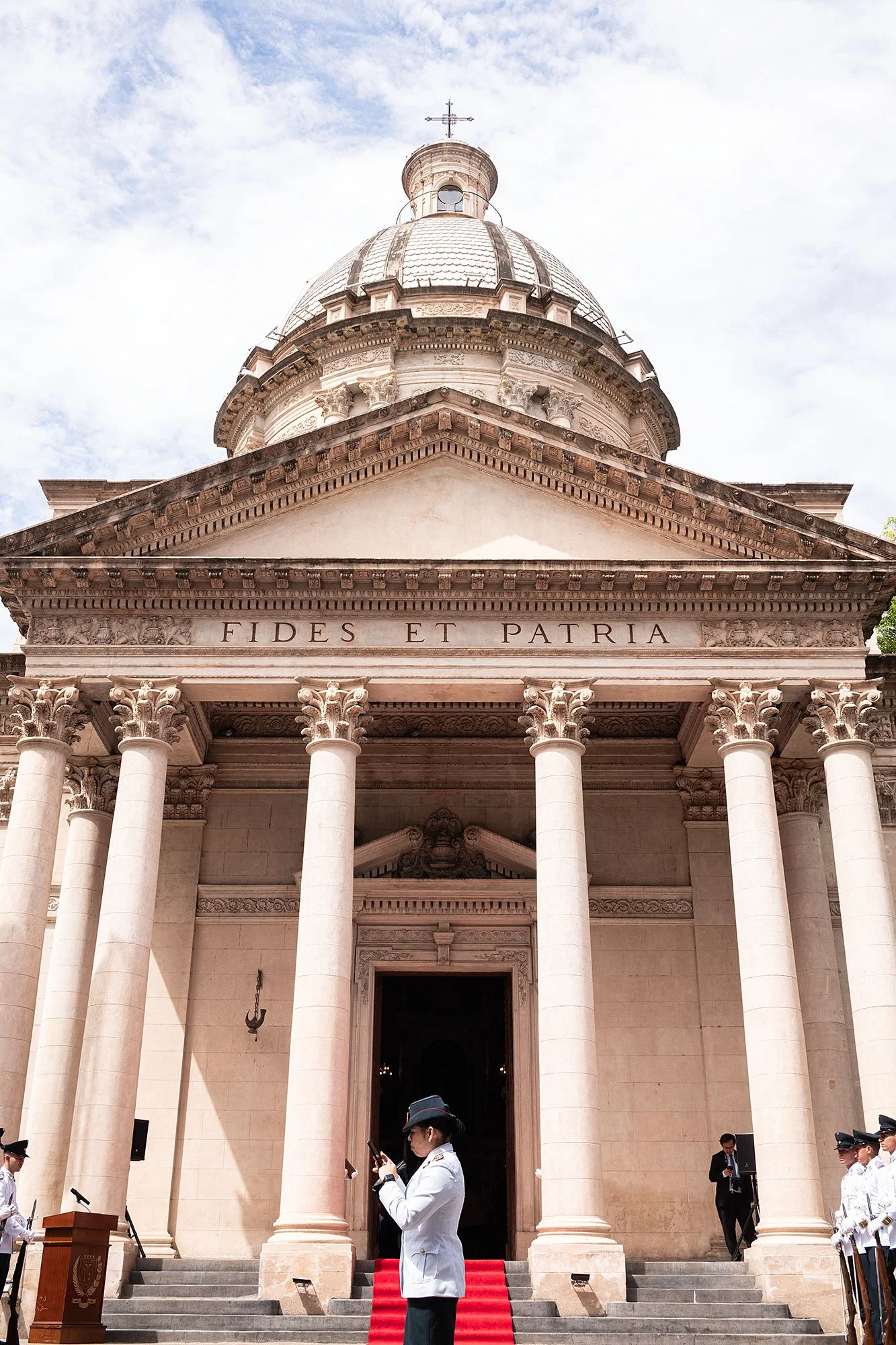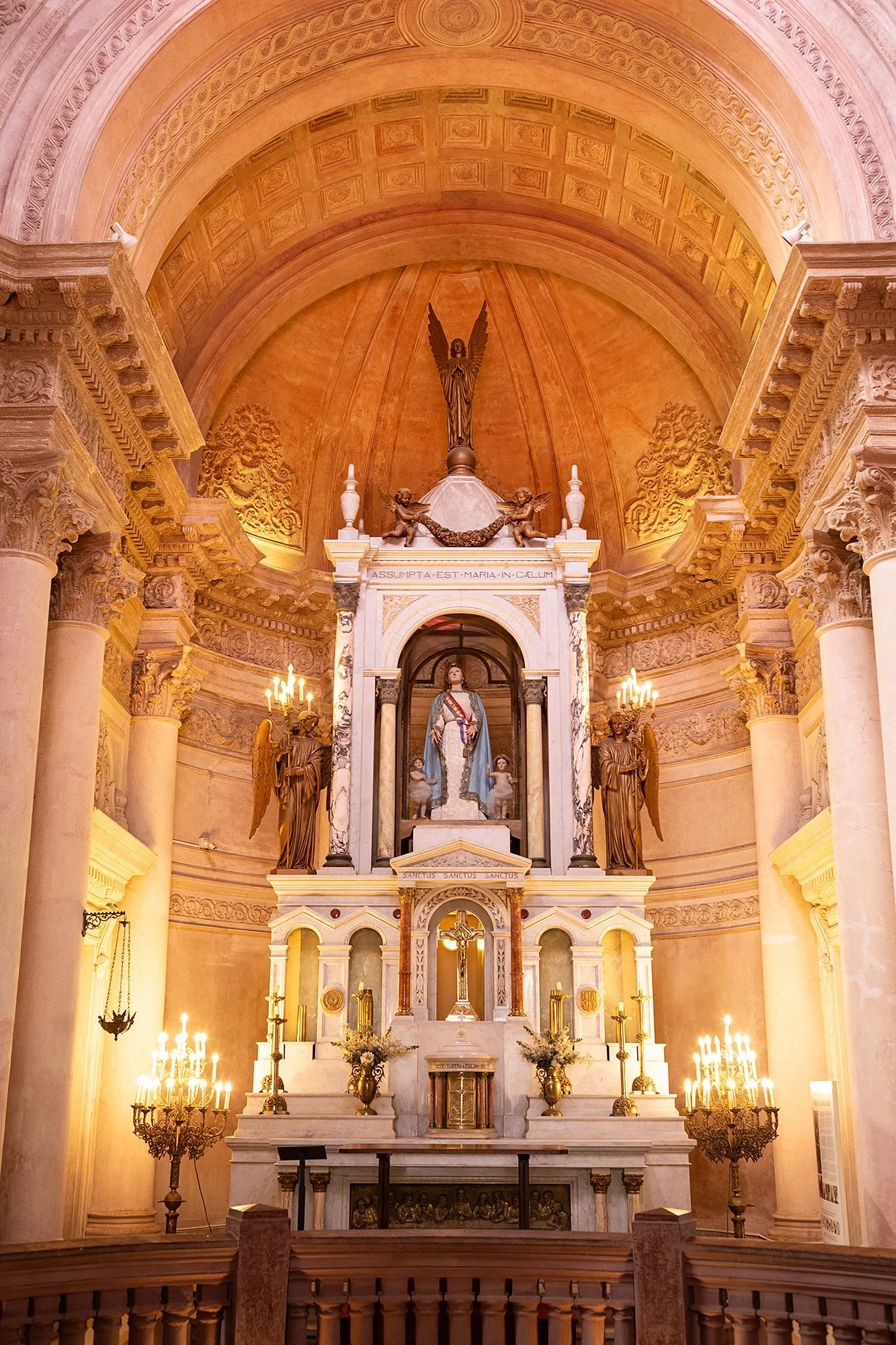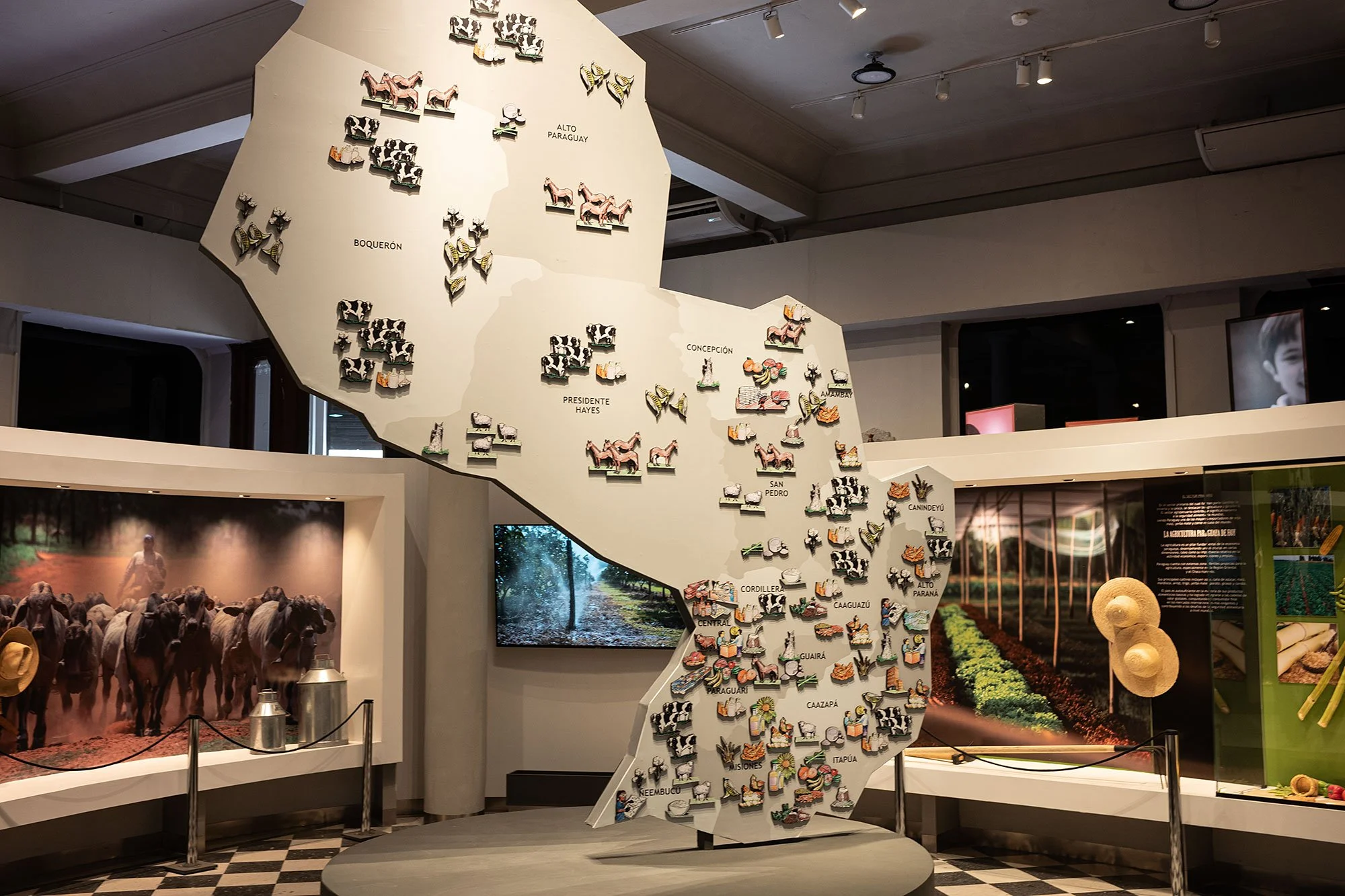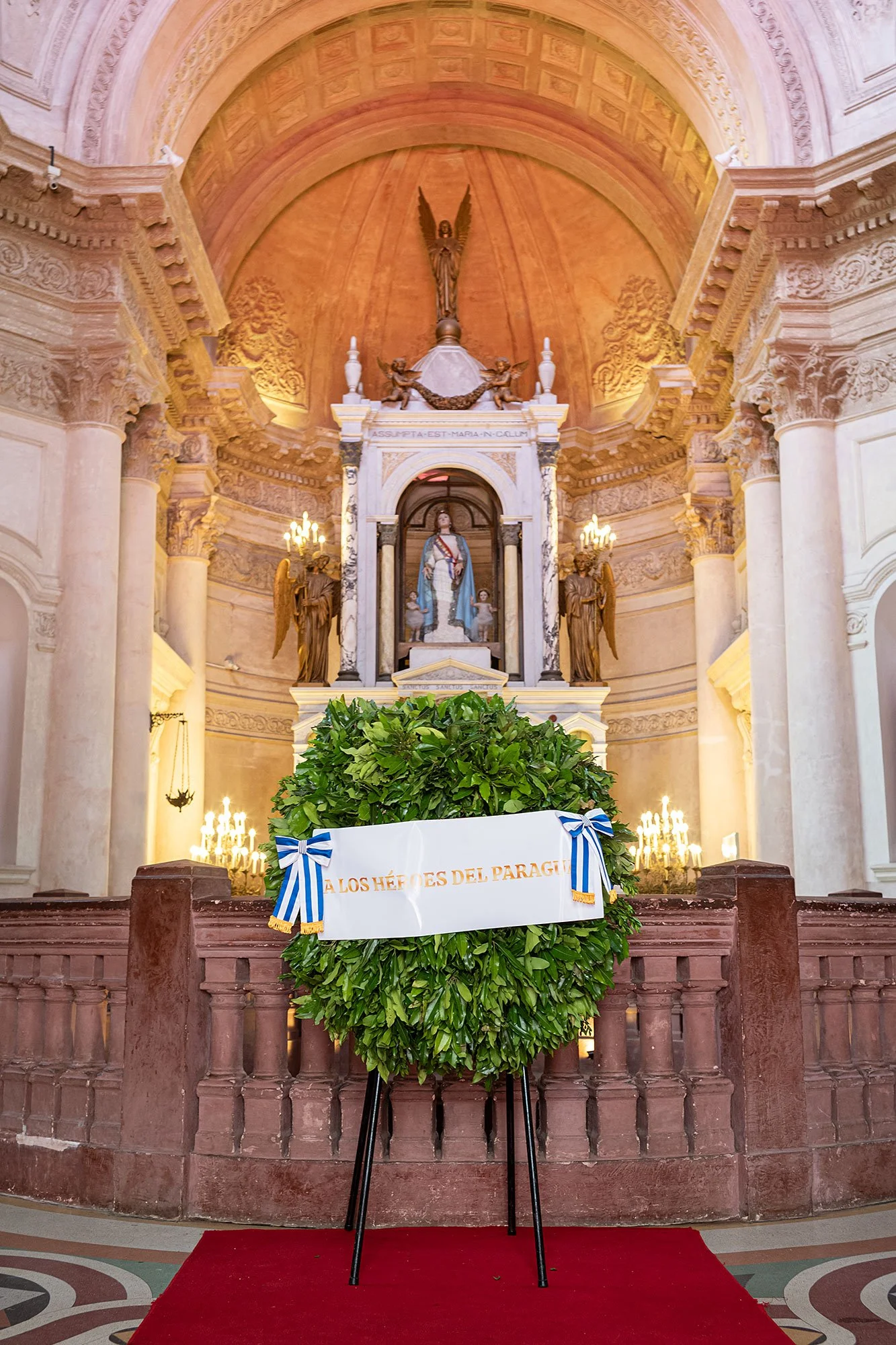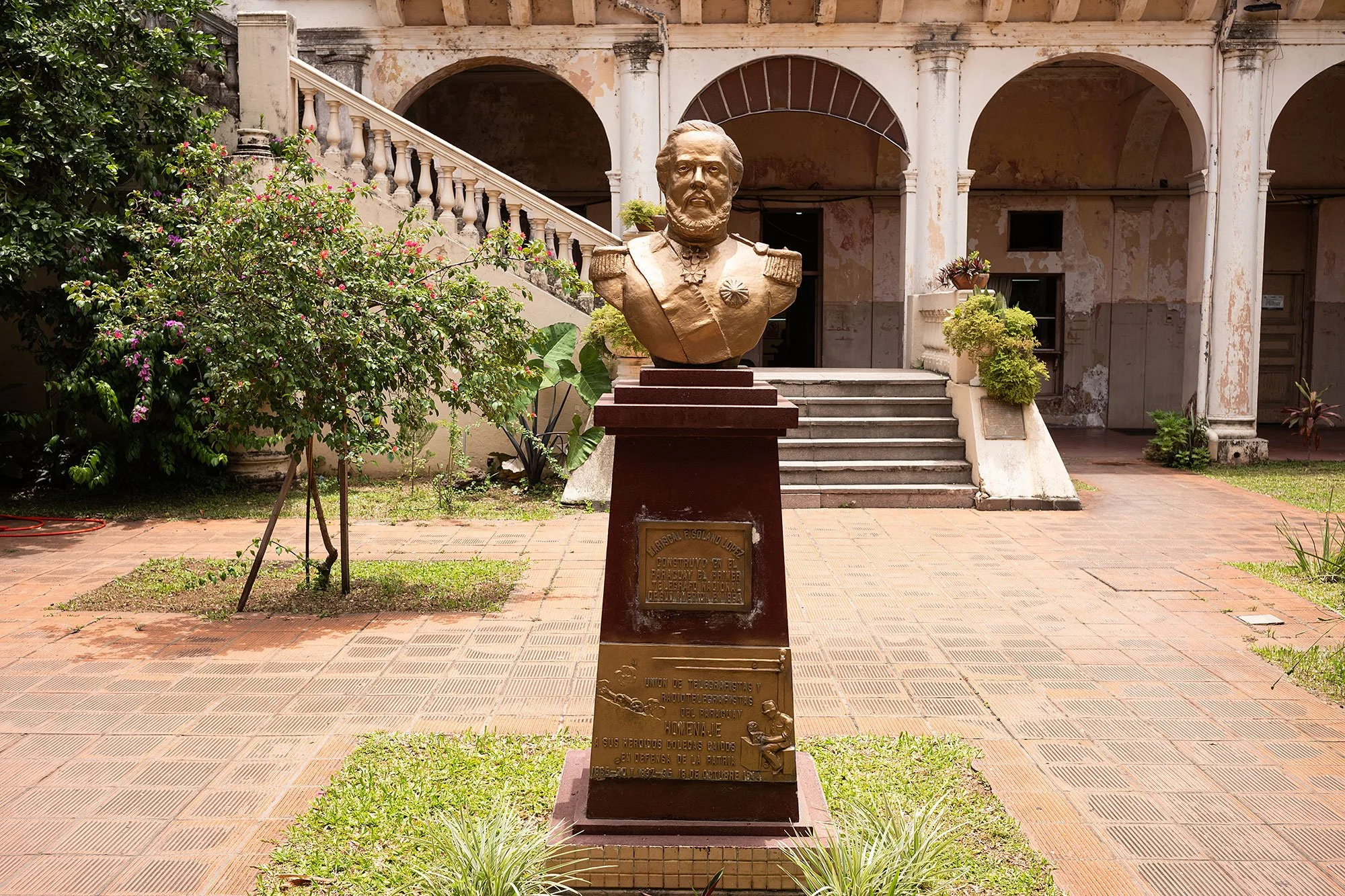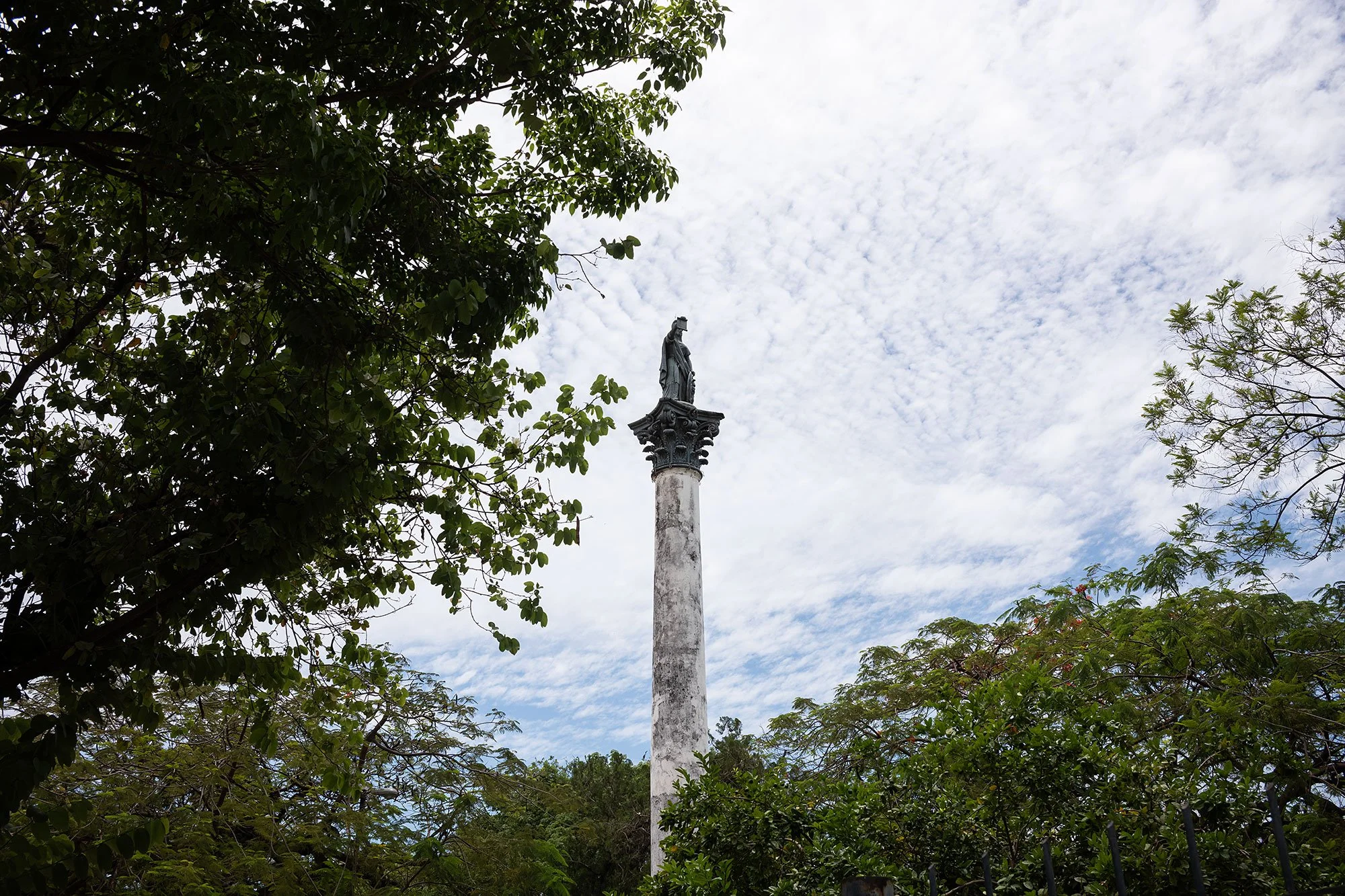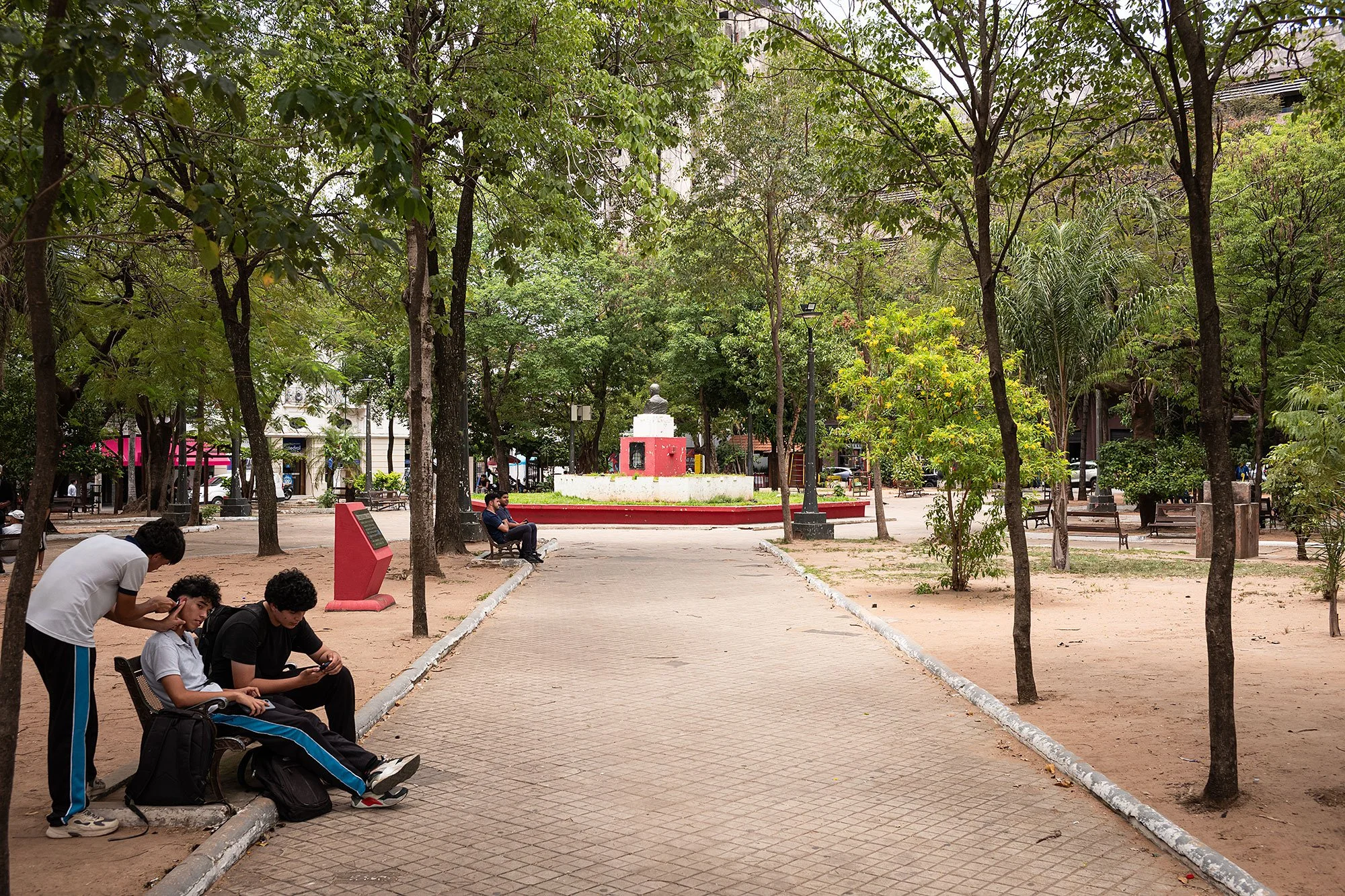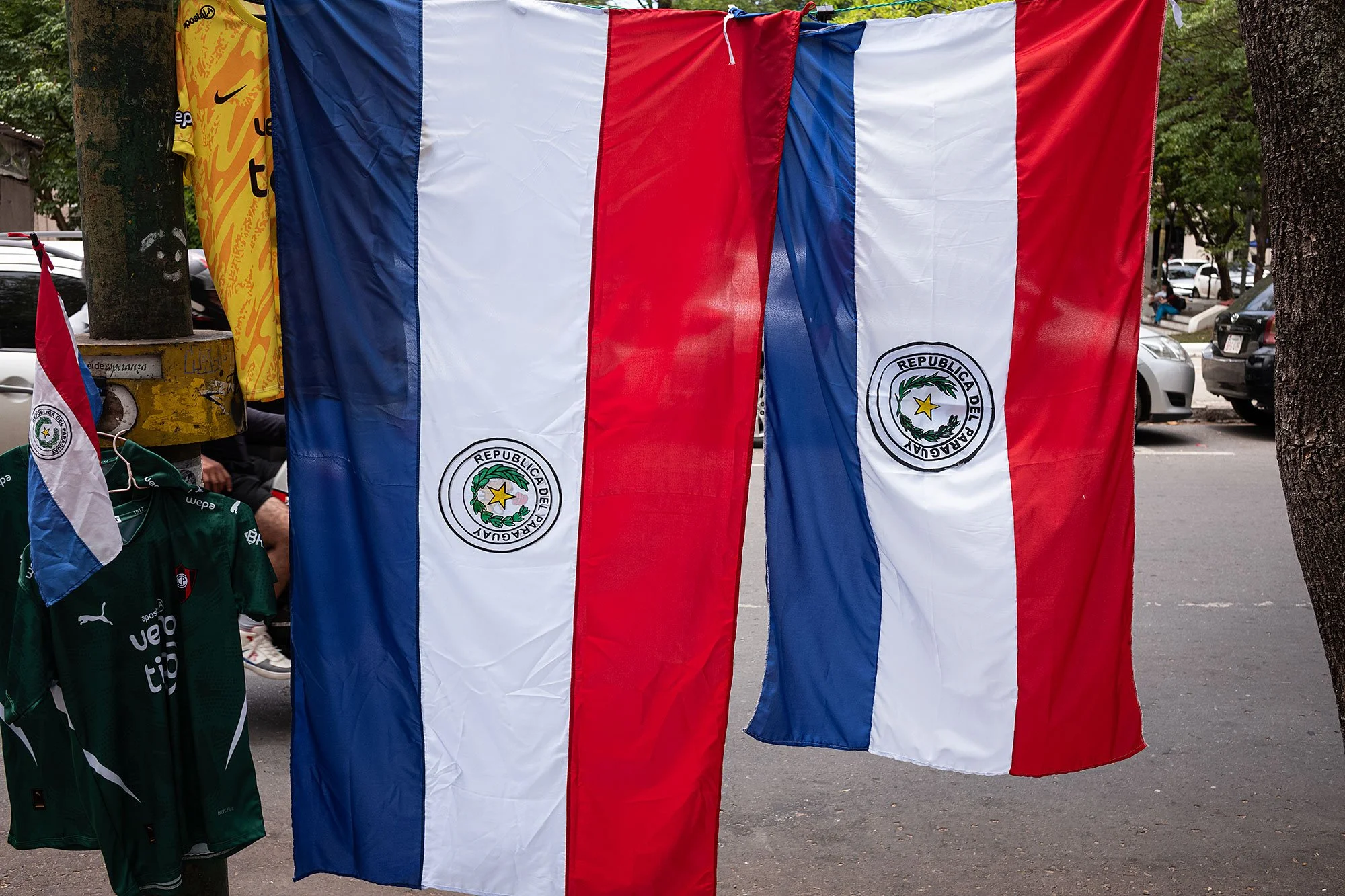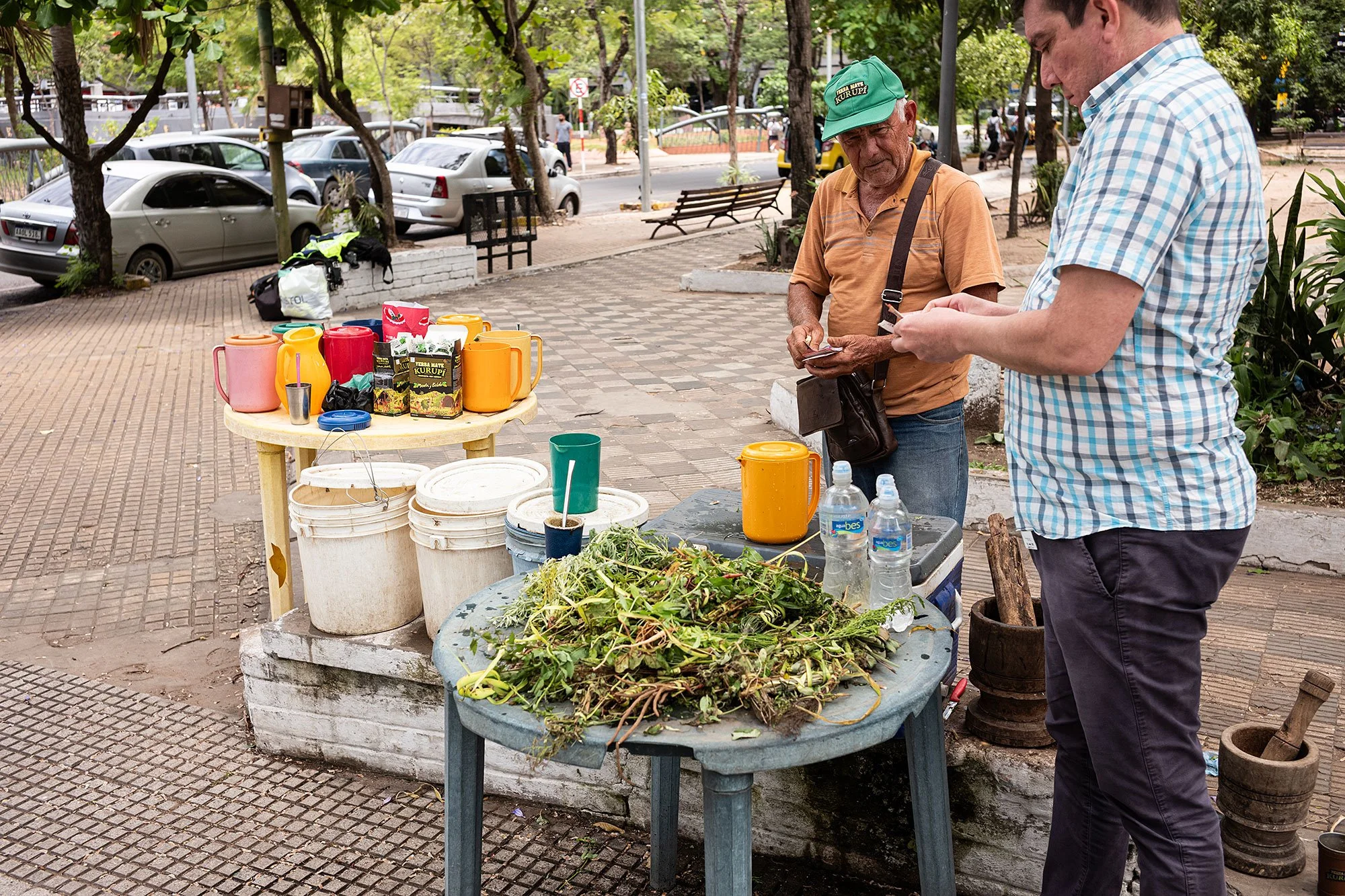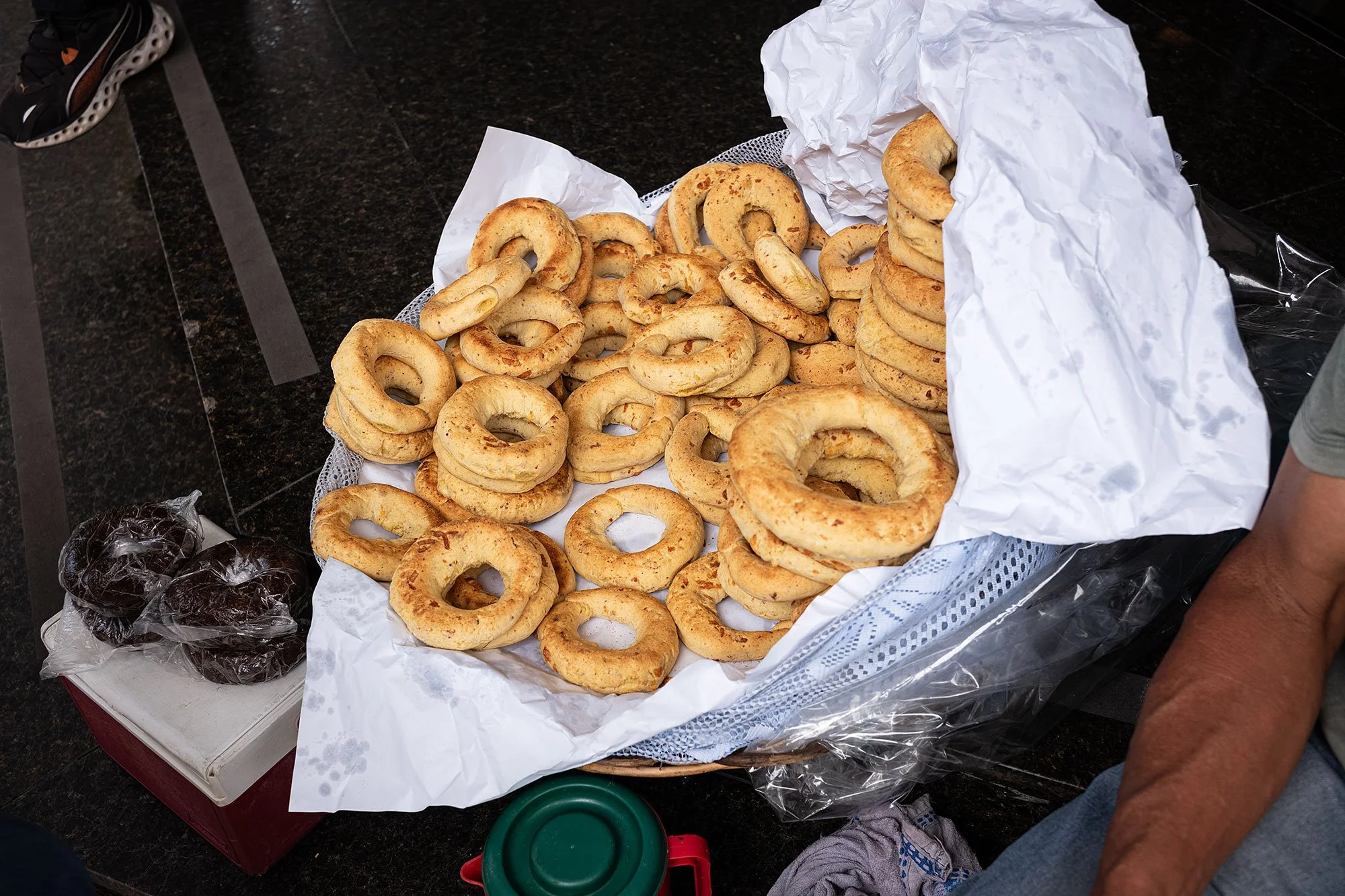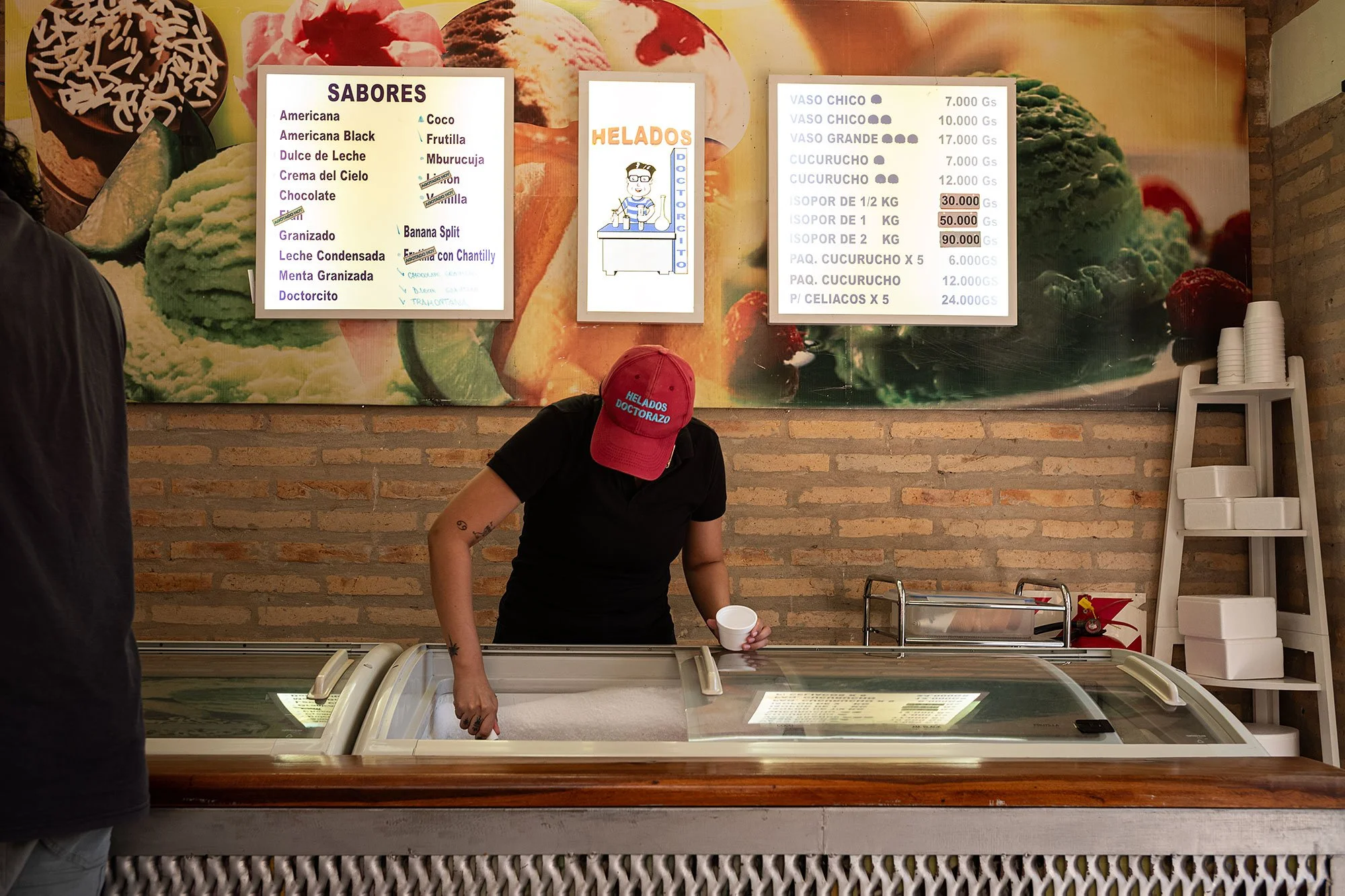A self-guided walking tour of the historic center of Asunción.
I’ve set the day aside to be a tourist in the historic old quarter of Asunción.
The forecast is good and the museums, churches, and monuments I plan to visit are all open according to various websites. I had originally thought to do my touring on Sunday, but half of the places I wanted to visit were closed; on Monday one of them was. And so, Tuesday it is!
I call an Uber to take me to the center. He takes a route that runs up by the Botanic Gardens, skirting the river and the Bay of Asunción before turning back inland towards the palace. From the window of the car I spot the Puente Heroes del Chaco, which connects Asunción and Nueva Asunción, facilitating traffic from the western regions into the capital.
The road leading running in front of the palace is closed and so I get out a block or two early. I ask a soldier guarding the road if I can continue on to take some photos and he waves me through. Soldiers in dress whites flank the path leading to the palace and a band is standing at the ready. A large flag flies over the courtyard.
It’s unclear to me what the pomp and circumstance are for and my Spanish is too limited to ask. A single photographer stands center opposite the palace waiting for something to happen and I stand near him for a bit to see if anything will happen.
Not wanting to spend my day waiting around on the off chance that I’ll catch some ceremony I take my leave and walk towards the next stop on my tour, the Independence House Museum.
Walking up the hill away from the palace I pass a number of murals on the wall and am happy to see such extensive street art in the captial. I wonder if there anyone offers street art tours of the capital, and I consider coming back another day just to wander the streets to see what I might find.
There’s a bit of construction going on in the center, as streets and houses are under renovation. I pass a hotel that looks from the outside to be closed but when I peer through the windows I see attendants at the front desk waiting for people to check in.
The Independence House Museum is closed for renovation. I continue walking up into the old quarter to Palma, a street lined with people selling wares to locals. A large tourist center breaks up the local sellers and I enter to buy postcards and see what other local items are for sale.
I continue on to the National Pantheon of Heroes. There are soldiers at arms here on either side of a red carpet that’s been laid out before the entrance. A military band stands in a garden off to the side. I ask if I can enter the Pantheon and a soldier nods. I walk the red carpet to have a look inside.
The National Pantheon of Heroes and Oratory of the Virgin of the Assumption was originally commissioned as a chapel to the Assumption of Mary by then-president Fancisco Solano López in 1863. Construction was begun but left unfinished following the War of the Triple Alliance, fought between Paraguay and the alliance of Argentina, Brazil, and Uruguay. It’s the deadliest inter-state war in Latin American history.
For over 70 years the building was surrounded by scaffolding, only to be completed and inaugurated in 1936 after the end of the Chaco War, notable as the first South American war in which modern weapons were used. It’s also the bloodiest South Ameican War of the 20th century, having killed 2% of Bolivians and 3% of Paraguayans.
Standing in this monument, its history flanked by such brutal wars, I wonder about the legacy of those enshrined within, including Francisco Solano López, Carlos Antonio López (the first constitutional president), José Félix Estigarribia (a hero of the Chaco War, and two unknown soliders amongst others.
I step out of the monument and cross the street to find two young tourists are speaking English to a man in uniform. They’re students here for the wedding of a classmate. The man in uniform is an Uruguayan Foreign Service Officer. He’s just started his two year mission to Paraguay in mid-October. He tells us that the new Uruguayan ambassador is being presented to the President and is coming here after to lay a wreath at the monument.
I ask him where he’s from in Uruguay. He tells me he’s from Montevideo but has lived outside of the capital in the countryside for 14 years. A finca? Yes, but a small one, he says, laughing. I ask if he’s raising any animals. Not yet. His job is in the city and with the commute there’s not enough time. And now he’s here for the next two years.
I don’t have long to wait. Soon the ambassador arrives. The soliders present arms and the band plays. I’m surprised at the lack of security, though I guess everyone around me is military. The ambassador pauses for photos, enters, presents the wreath, pauses for photos. Speeches are made. And then he’s gone.
I cross the street to wander through the Museo de Economía. All the wall text is in Spanish and so I make a cursory tour around the exhibits and exit. There’s a tour group being led around by a woman speaking Spanish and I pause to watch her point out what products are produced where on a map of the country as I pass.
Stepping outside I see that the soliders and the band and the carpet have disappeared. There are two people in uniform wrapping up before leaving the premises.
I cross back over to the Pantheon to take photos of the wreath. As I’m taking photographs the woman leads her tour into the building and she greets me with a barrage of words. I apologize for my poor Spanish; I haven’t caught half of what she has said. She laughs and wishes me a good day.
I walk to Kaffe’i, named one of the 100 best coffee shops in South America this year. I order a flat white and a cake, but the cake is unavailable. A pain au chocolat? Unavailable. The only things they have are in the display case. I opt to go with just the coffee.
I find a table upstairs and wait for the electronic buzzer they’ve given me to go off. When it does I head back downstairs to collect my coffee and ask for a pen.
I drink my coffee and write post cards. A woman and a man sit near me; he’s practicing Spanish with her, she English with him. When they’re finished she collects their empty cups and plates to take downstairs. She glances over at me and I compliment her on her shoes. She smiles and thanks me, twisting a little to show them off before she disappears down the stairs.
I look up post offices in Asunción and, upon reading reviews, discover that the best bet for sending out postcards will be to post them from the central post office a few blocks from where I am. The post offices near my apartment seem to have closed.
I finish up my postcards and walk over. A guard walks with me into the courtyard of the building points me to a door in the corner.
I step into an office. A man greets me and bids me to sit. He asks me where I’m posting my cards to. I tell him: the US, England, and Namibia. He collects and counts them and disappears with one of them. Two women who work there dole out the stamps and then set to affixing them.
The man comes back and tells me they can’t post to Namibia, but the others are fine. I pay for the stamps and he points me to another door leading to the room in which mail is collected. I thank him for his help, walk over to the other part of the building, and hand the cards over.
I walk to the Metropolitan Cathedral of Our Lady of the Assumption, reaching first the Plaza De Armas. Statues and sculptures fill the park and I stop to look at a few through the iron fence as I pass.
The church is closed. A policeman unloads a paragraph of Spanish on me in explanation, but I don’t catch any of it. I smile and nod and move on.
I decide to walk to the Iglesia De La Encarnacion to have a look and to see a little more of the city. I walk back in the direciton of the Pantheon and cross the Juan E. O'Leary Public Square and connect to the Plaza de la Libertad.
Vendors sell various items on the roads separating the plaza, including flags and a plant I can’t figure out the use for.
Reaching the southwest corner of the Plaza de la Libertad, I find a man sitting on the steps of a bank selling bread. I haven’t eaten much today (having been thwarted in my hopes for a treat at the cafe) and buy a small roll of bread. It reminds me a little of Brazilian cheesebread and I snack on it as I continue walking to the church.
The Iglesia de la Encarnación was begun in 1893 and has yet to be finished. The current building sits on one of the seven hills that define Asunción, after having been moved several times from its initial position on a buff overlooking the bay, where it began in 1539.
During the Chaco War, the church served as a field hospital, and is now also notable as one of only two churches in the country that have a pipe organ.
I’m hungry and ready to head back towards the apartment in search of lunch. There’s an area between where I am and my neighborhood that boasts two French cafe/bakeries and I debate whether to stop by there today or leave those visits for later in the week.
Checking the map I notice the Escalinata José de Antequera y Castro nearby. It’s marked as a tourist attraction, though I haven’t heard of it before now. Curiosity gets the better of me and I decide to walk over to take a look.
The Escalinata José de Antequera y Castro stands on Sansón Cue, the highest hill in Asunción, offering views of the Bay of Asunción through a narrow gap between the buildings.
The staircase was designed to address the height elevation between two parallel streets based on the principle that “cities should respect the natural topography of the land on which they are built, not flatten it for paving afterward,” according to architect and mayor Miguel Ángel Alfaro.
At the top of the stairs stands a bronze sculpture commemorating those who fell in the Battle of the Comuneros, a series of uprisings by settlers in Paraguay against the Spanish authorities in the 1700s.
There are a few people lingering at the base of the stairs when I arrive, hanging out. It reminds me a little of the Escadaria Selarón in Rio on a much smaller scale only without the crowds and without the art.
At the top I stop to look out between the buildings to the bay at the base of the hill. There’s a highly-rated ice cream shop at the top and, eager for a treat, I stop in for my first ice cream in Paraguay.
From the ice cream shop I take a Bolt to La Galette Jara, a very cute French cafe in Jara. It’s beautifully put together, but there’s a large group of tweens at a back table and they ruin the vibe. One of them tries to keep the others quiet with limited success.
I order a gallete complet and the reviews are correct. The food isn’t the reason to come. I take a Gateau Basque and a Tarte chocolat noir to go (which, when I have them after dinner, are both fantastic) and walk over to Georges Patissier, a French pastry shop. I figure if I’m in the area I may as well make the most of it. The cakes don’t look as good, but I order a chocolate tart to sample and head back home.
In the late afternoon I head to the pool and end up swimming 20 laps. The day has become overcast and it’s nice to dry off on one of the lounge chairs. As the sun begins to set the sky clears and I head upstairs to take photos before making pasta for dinner.
The light shifts in the apartment and I step out onto the terrace to watch the sunset. Light whisps of rain fall from the heavy clouds, lit like golden sheets by the setting sun. It’s a beautiful display and I forget my dinner and the cakes and tarts waiting for me as I sit and gaze out from the apartment, enthralled by nature’s display. 🇵🇾

